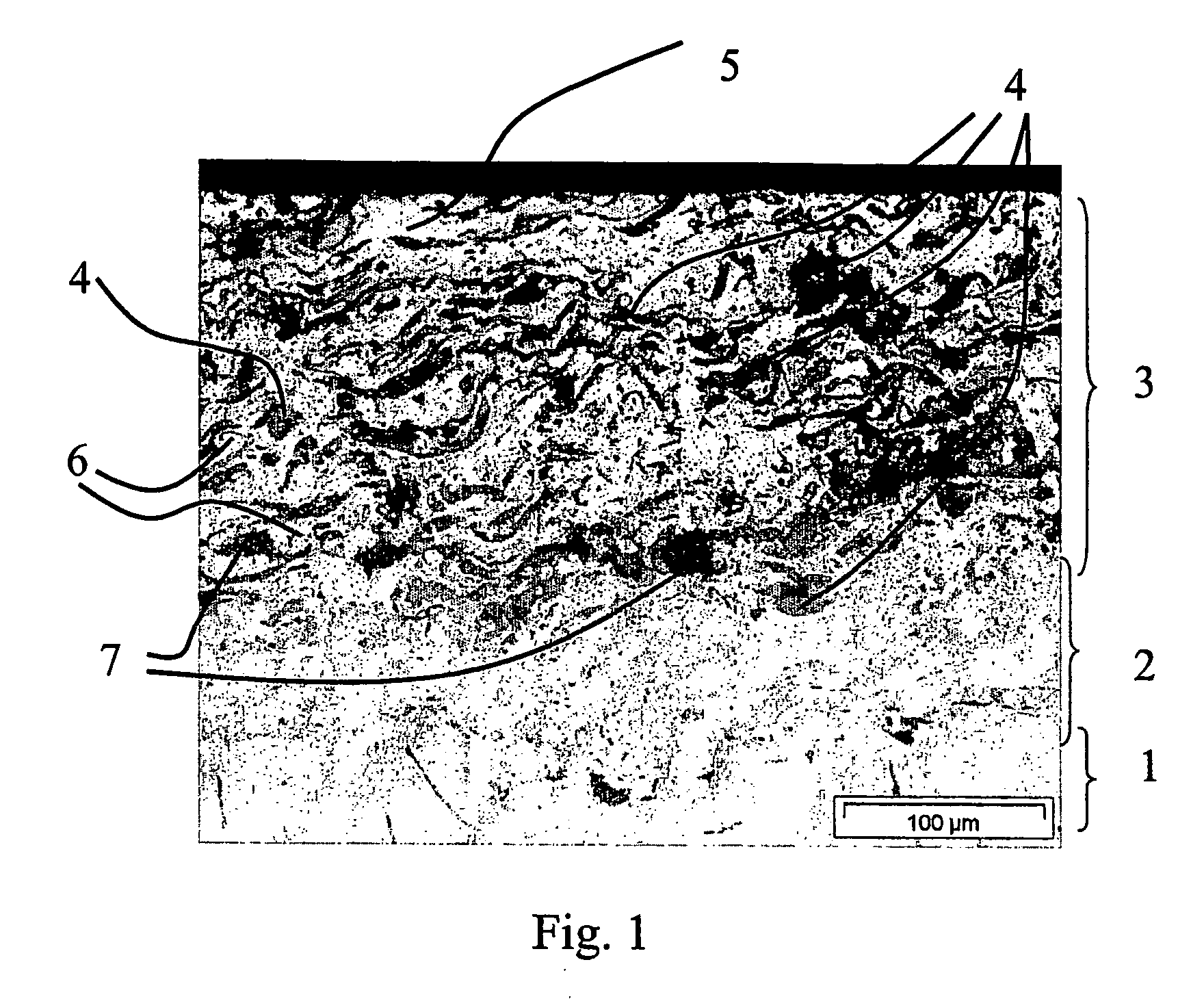Composite material consisting of intermetallic phases and ceramics and production method for said material
a technology of which is applied in the field of composite materials comprising intermetallic phases and ceramics, can solve the problems of insufficient adhesion of layers to the base material, inability to manufacture, and inability to meet the requirements of the application, and achieves the effects of high ductility, high hardness, and economical and rapid process for manufacturing
- Summary
- Abstract
- Description
- Claims
- Application Information
AI Technical Summary
Benefits of technology
Problems solved by technology
Method used
Image
Examples
example 1
ILLUSTRATIVE EXAMPLE 1
[0073] This illustrative Example is concerned with the manufacture of a high capacity brake disc for motor vehicles. For this, the brake disc was produced by the combination of a conventional gray cast iron brake disc with a friction layer of a titanium aluminide / aluminum oxide composite material. A conventional gray cast iron brake disc was prepared for coating by sandblasting. For the LDS process two different wires were employed. Wire 1, the metallic wire, was comprised of conventional NiTi5. Wire 2, the composite wire, was comprised of a metallic jacket and a ceramic core. The metallic jacket was formed by Al (purity greater than 99.5%) and the core by titanium oxide (TiO2) particles (Rutil) with an average particle size in the range of 2 to 5 μm. The wire was composed of 72 wt. % of jacket material and 28 wt. % filler. The wire was obtained by stretching a titanium oxide particle filled aluminum metal jacket.
[0074] The diameter of both wires was 1.6 mm.
[...
example 2
ILLUSTRATIVE EXAMPLE 2
[0080] Illustrative Example 2 concerns the manufacture of a shaft of a spray compacted bolt provided with a wear resistant coating.
[0081] As base or substrate for building the bolt a steel plate with a ground surface was employed. Thereupon, by spray compacting in known manner in multiple layers, a bolt or stud is deposited.
[0082] The wear resistant protective layer was produced by the inventive LDS process with two wires. As wire 1 a conventional NiTi5 wire with a diameter of 1.5 mm was employed. As wire 2 a composite wire comprised of 65 wt. % Al (purity 99.5%)and 35 wt. % titanium oxide (Rutil, with an average particle diameter of 2 to 5 Mm) was employed. The Al formed a dense jacket for the core comprised of titanium oxide. The diameter of the composite wire was 2 mm. The two wires were supplied to the LDS-nozzle with the same and constant speed.
[0083] For examination of the material characteristics of the deposited composite material, the bolt and subst...
PUM
| Property | Measurement | Unit |
|---|---|---|
| Fraction | aaaaa | aaaaa |
| Thickness | aaaaa | aaaaa |
| Wear resistance | aaaaa | aaaaa |
Abstract
Description
Claims
Application Information
 Login to View More
Login to View More - R&D
- Intellectual Property
- Life Sciences
- Materials
- Tech Scout
- Unparalleled Data Quality
- Higher Quality Content
- 60% Fewer Hallucinations
Browse by: Latest US Patents, China's latest patents, Technical Efficacy Thesaurus, Application Domain, Technology Topic, Popular Technical Reports.
© 2025 PatSnap. All rights reserved.Legal|Privacy policy|Modern Slavery Act Transparency Statement|Sitemap|About US| Contact US: help@patsnap.com



